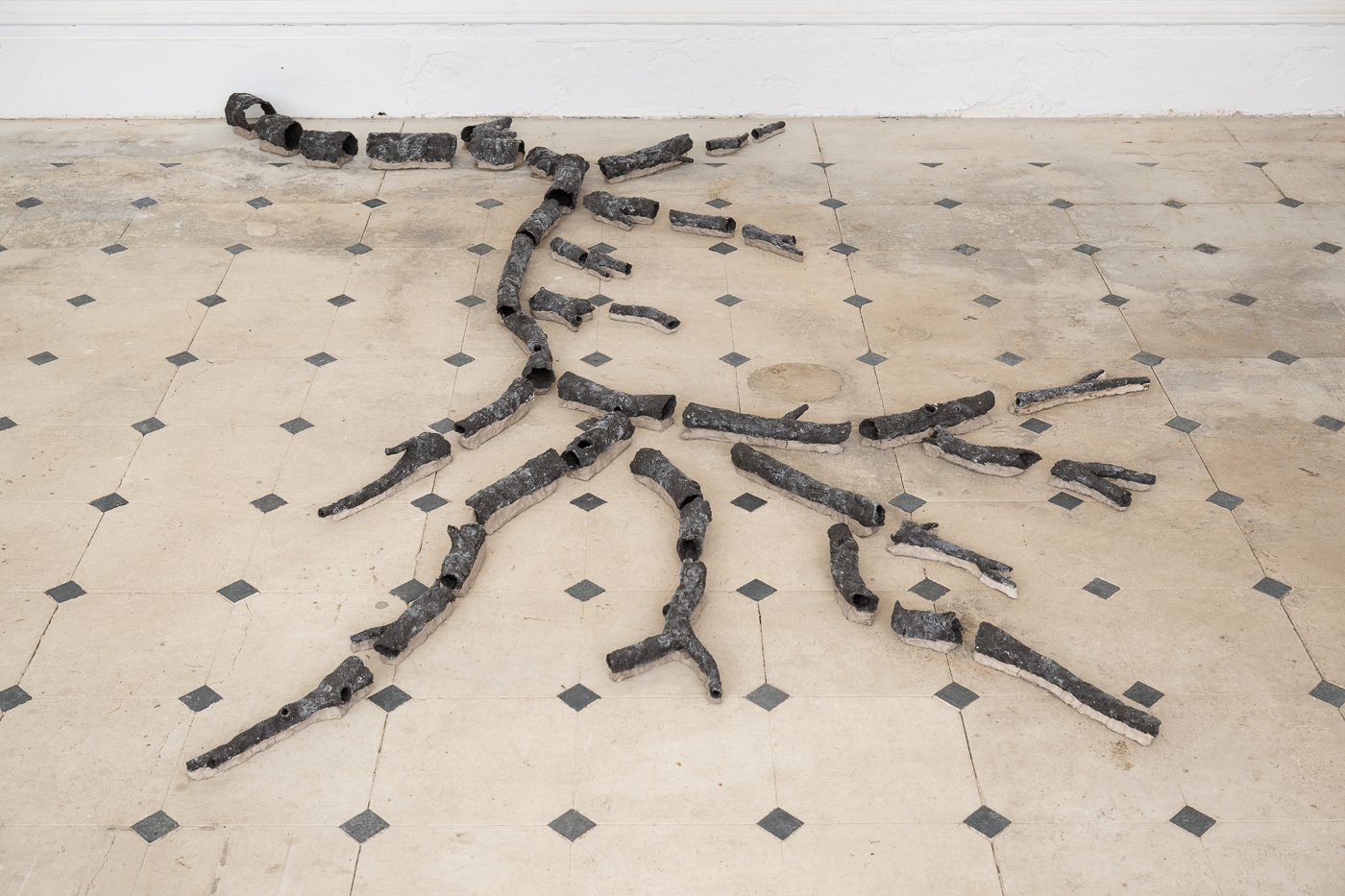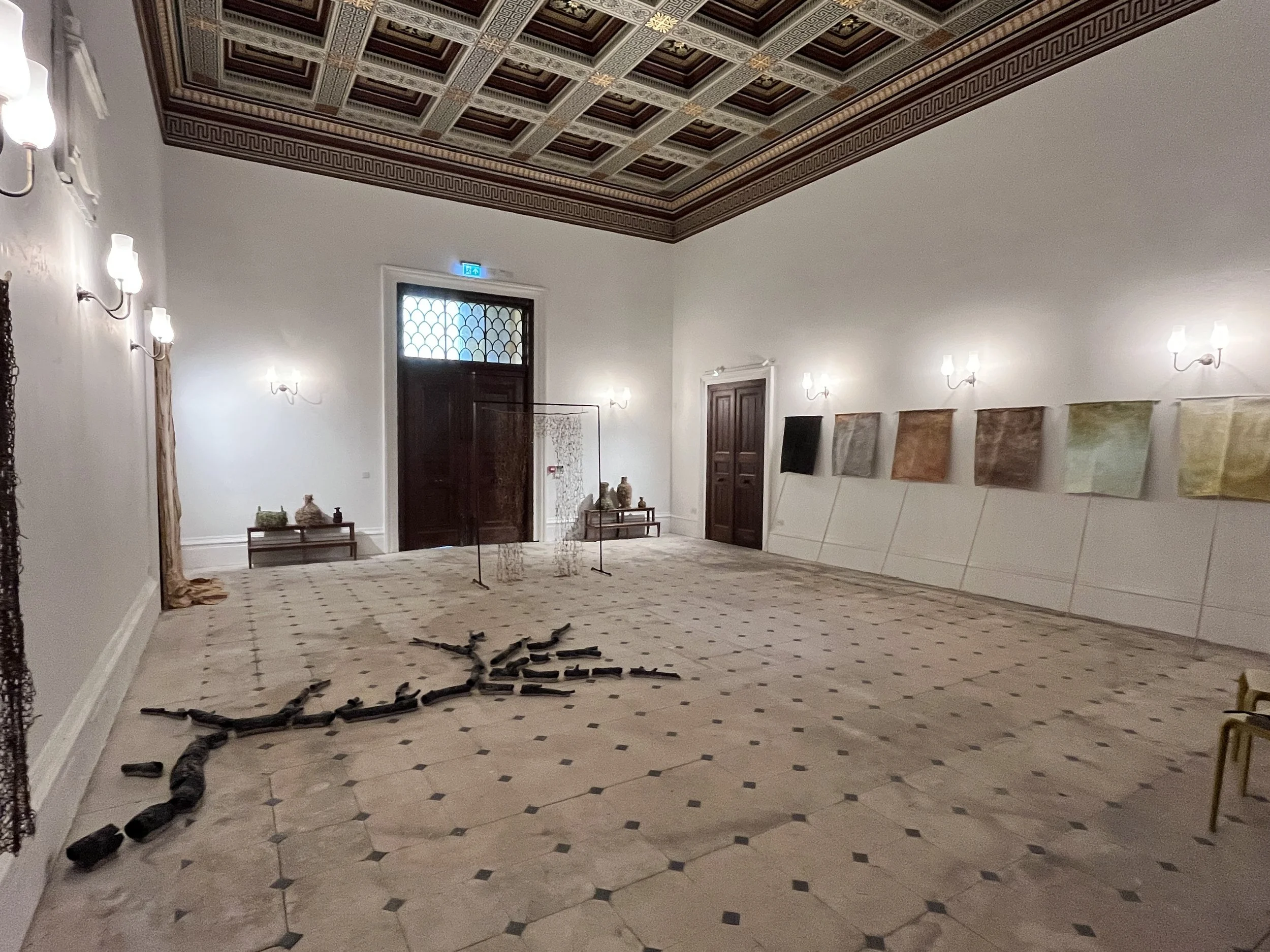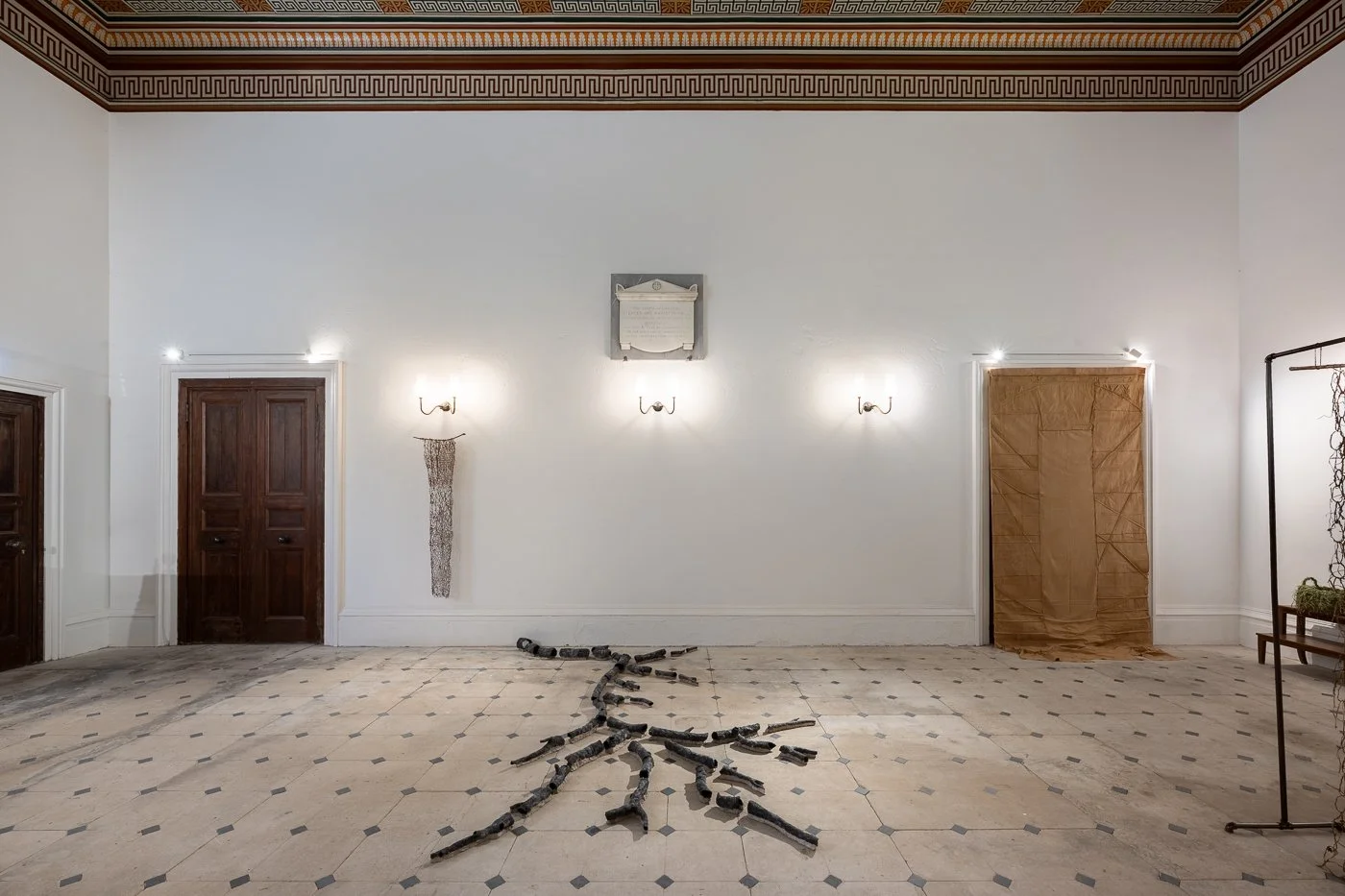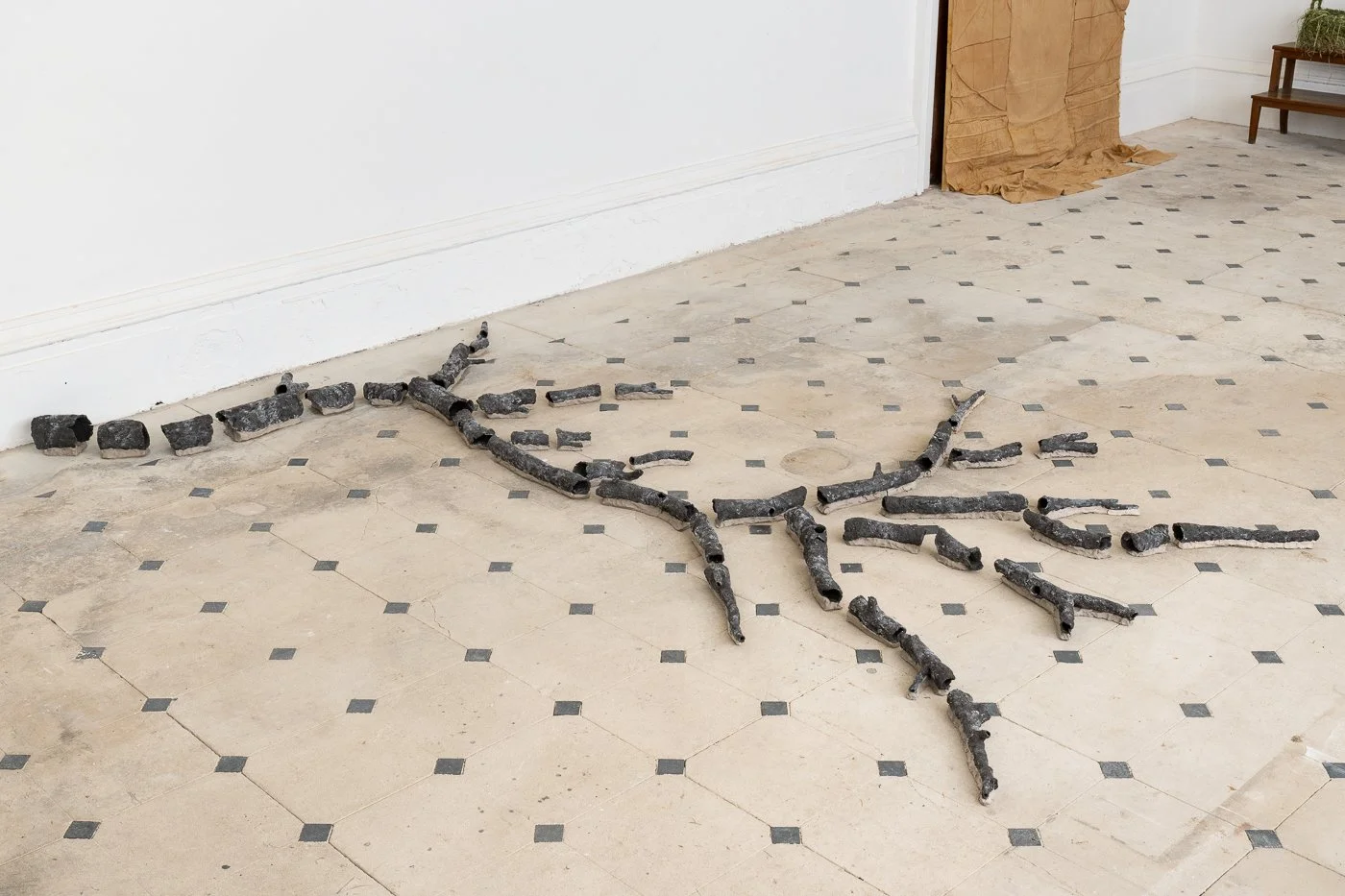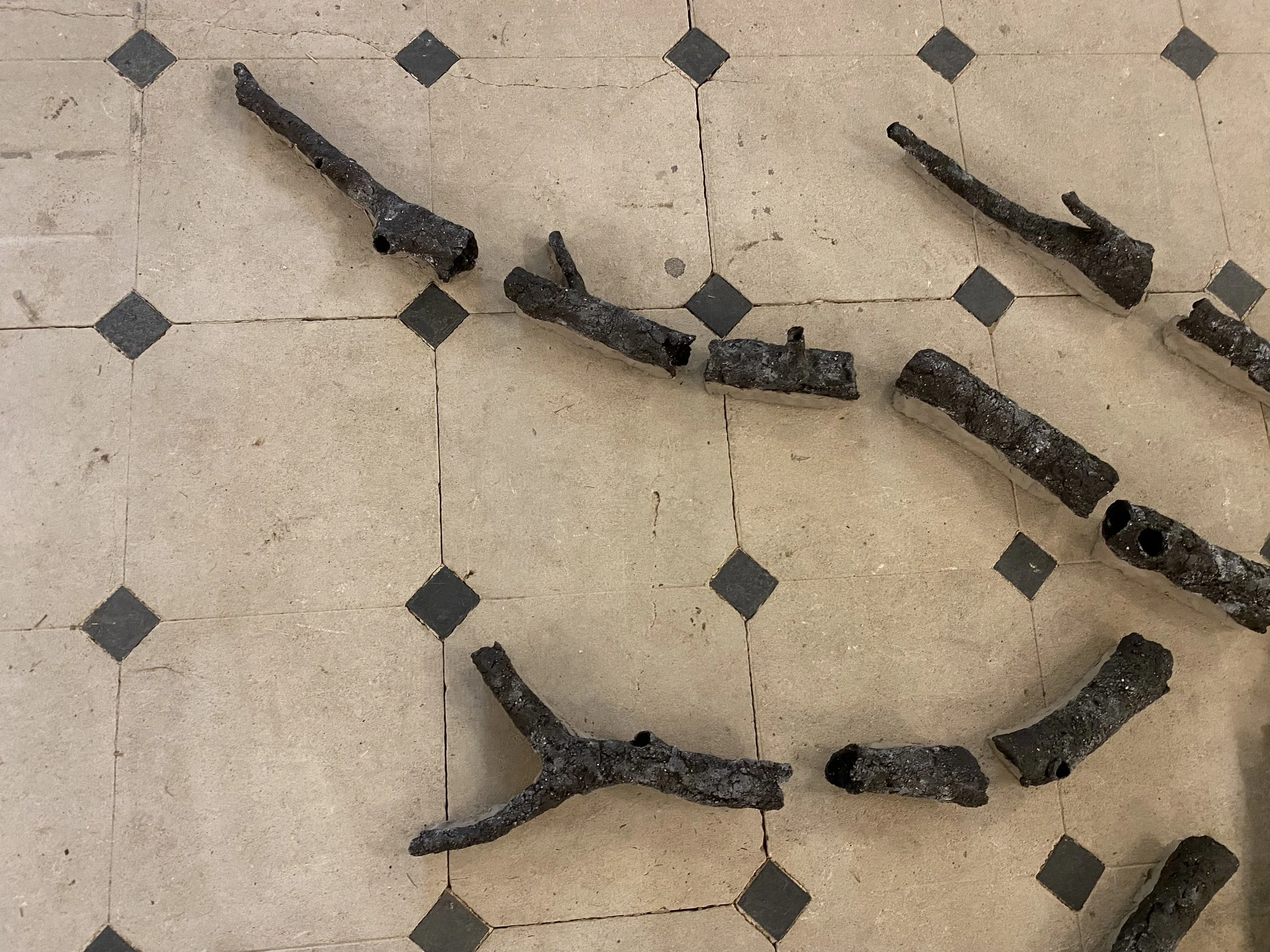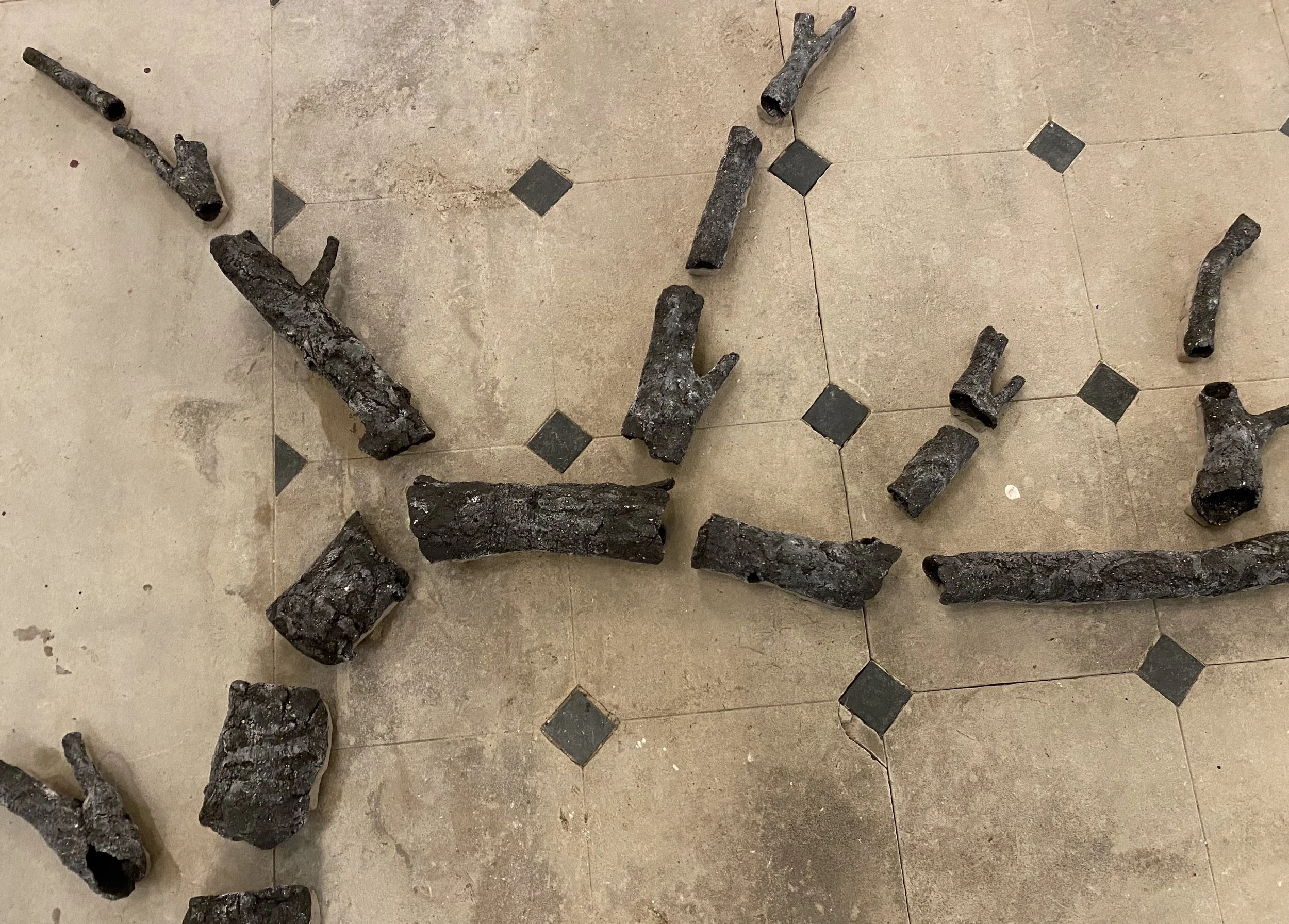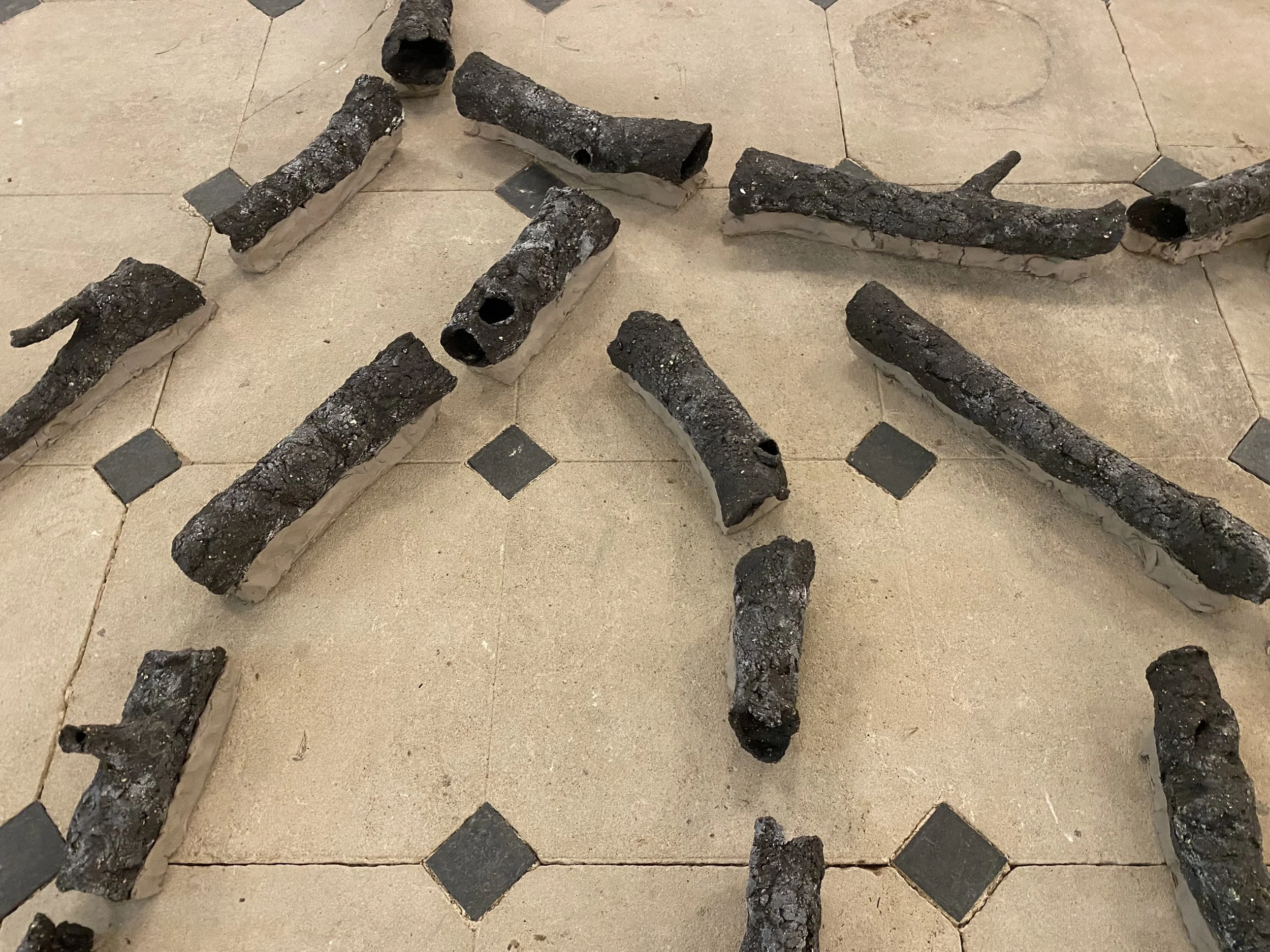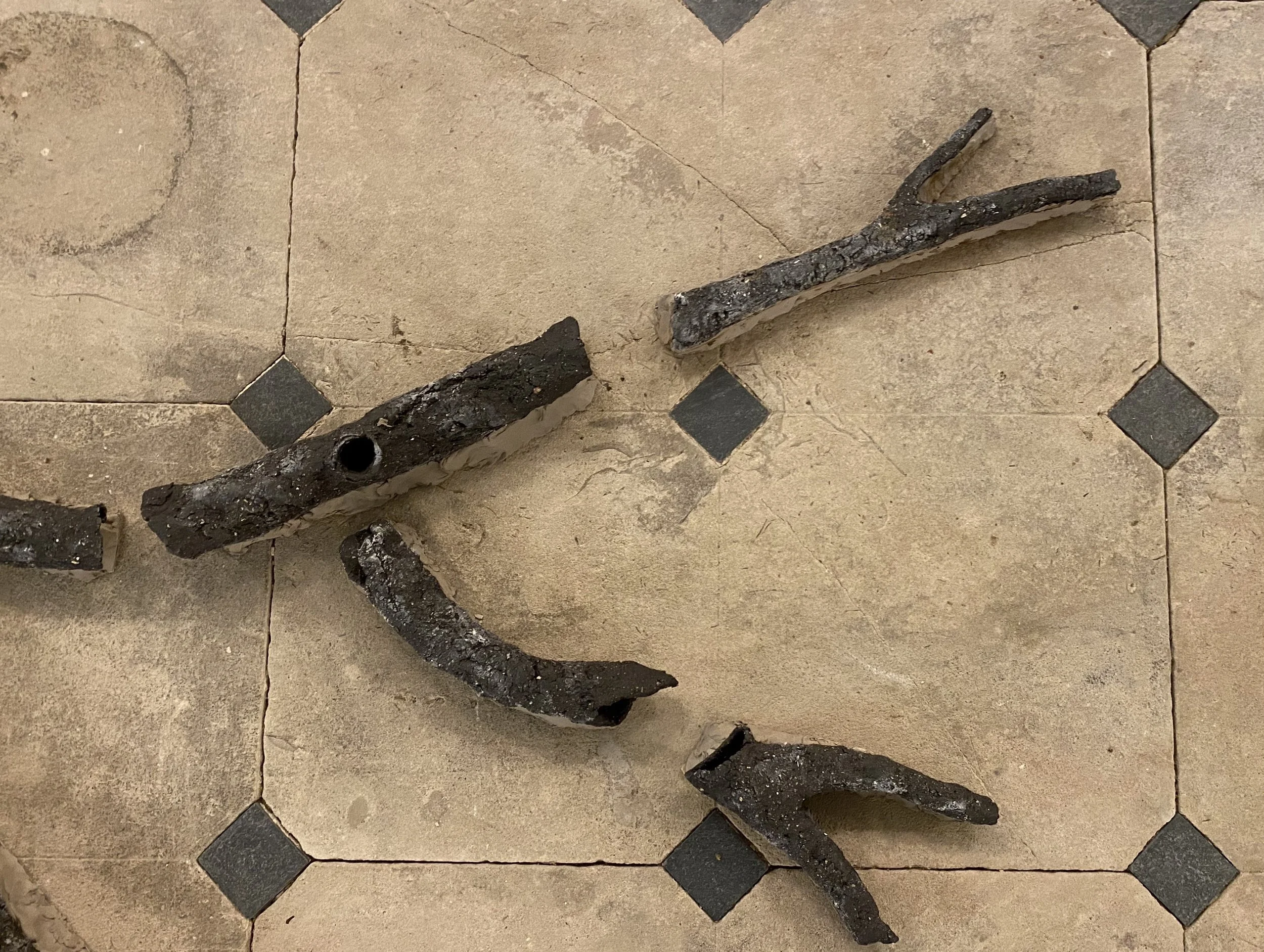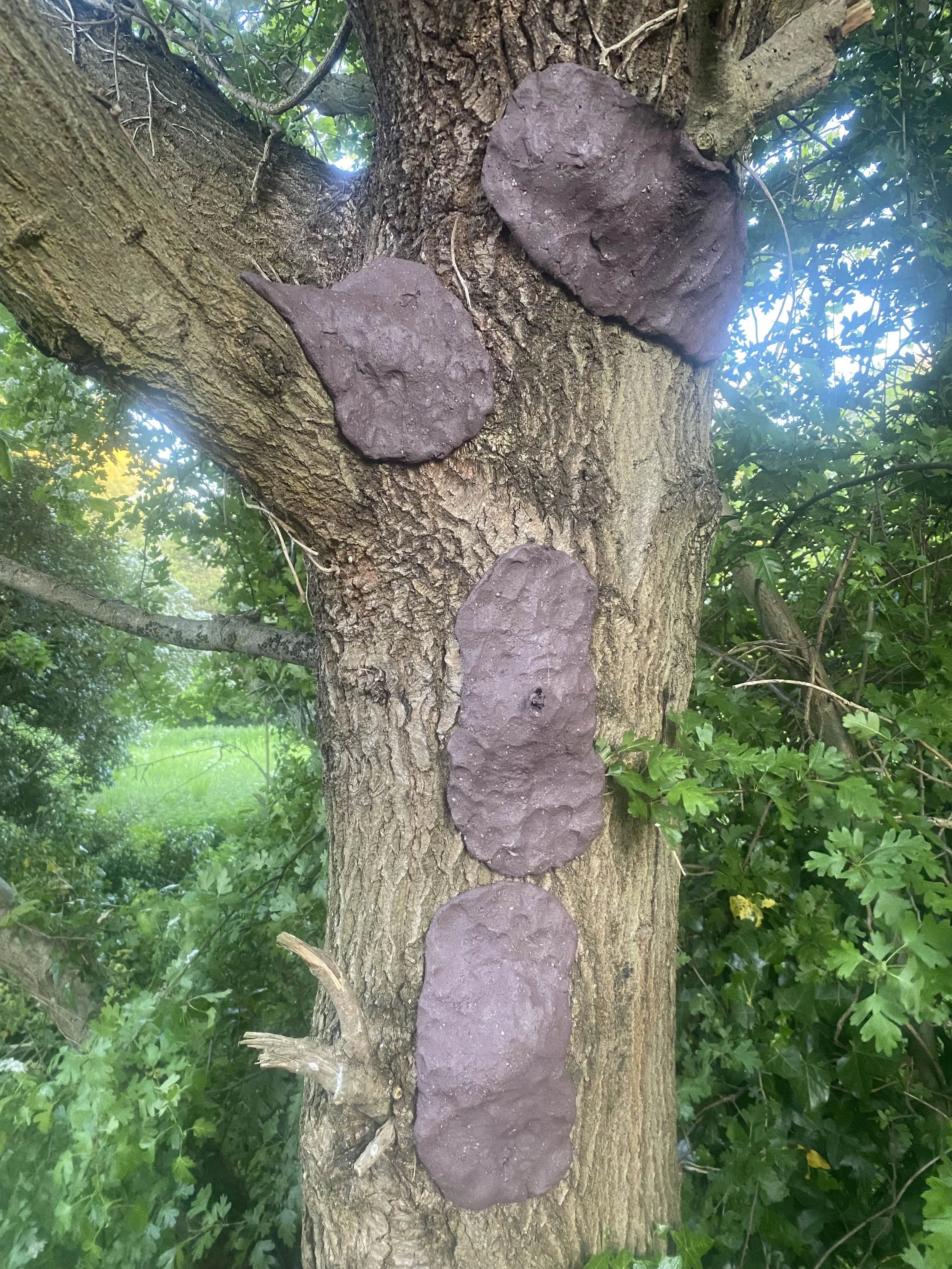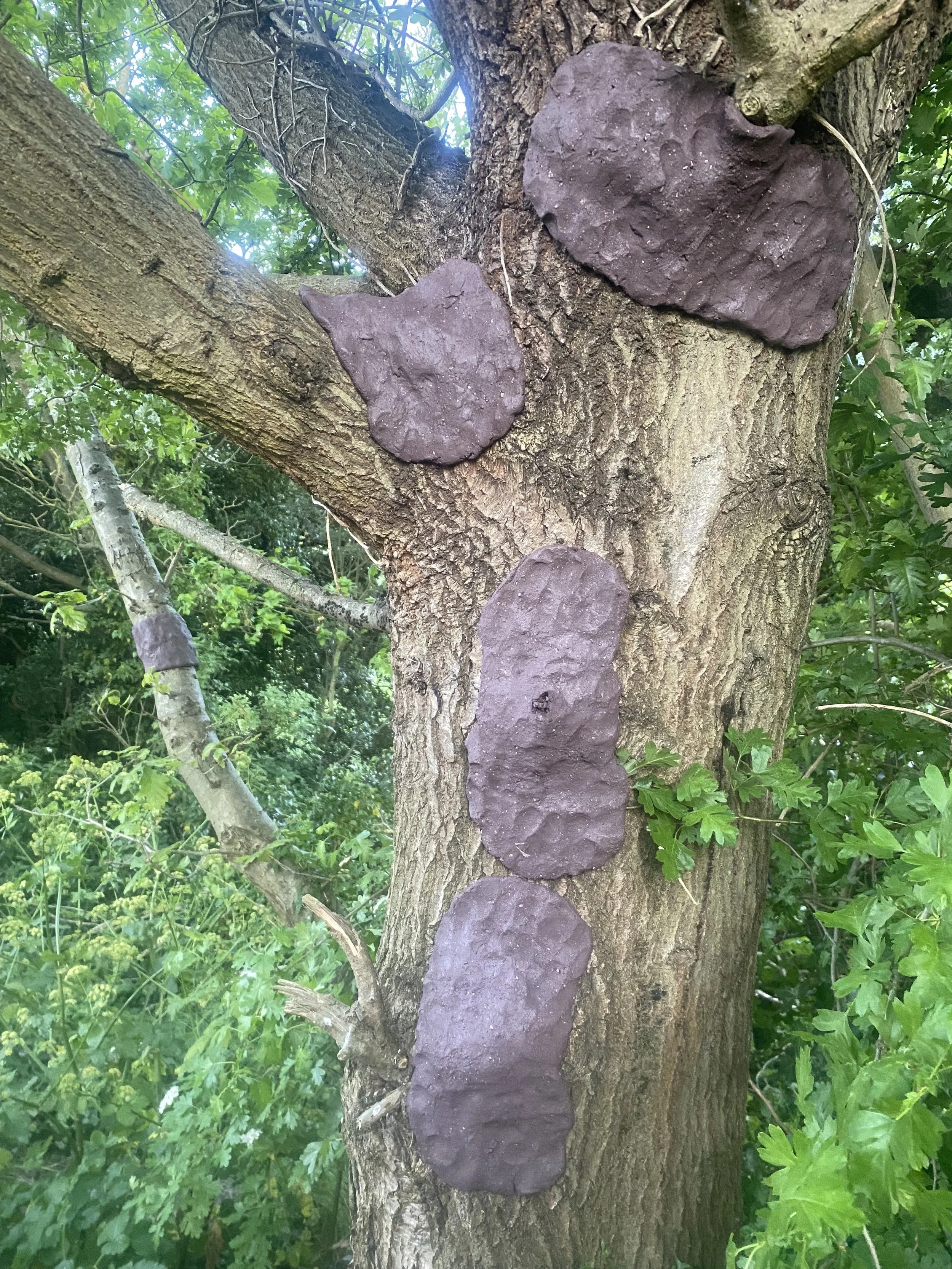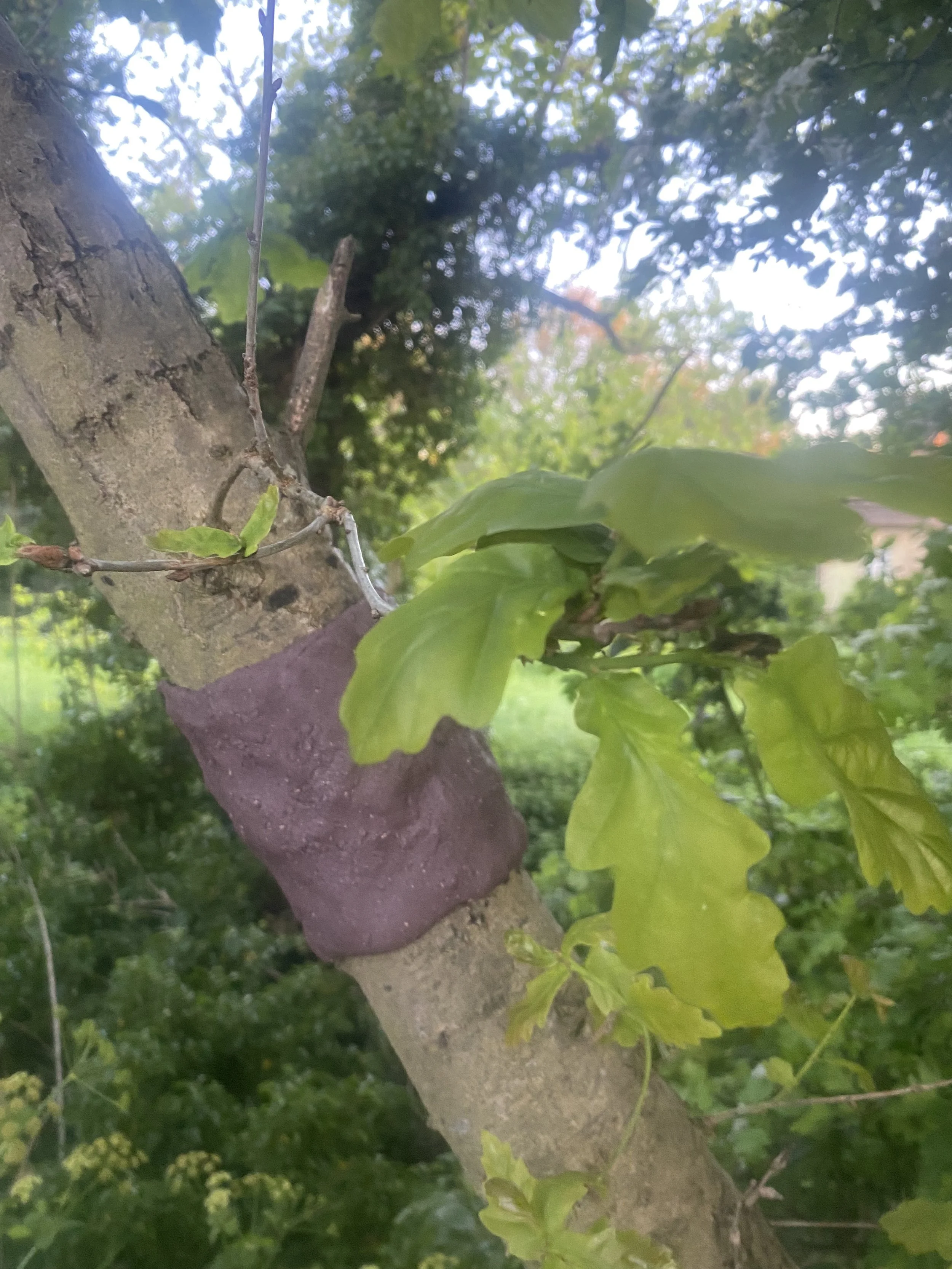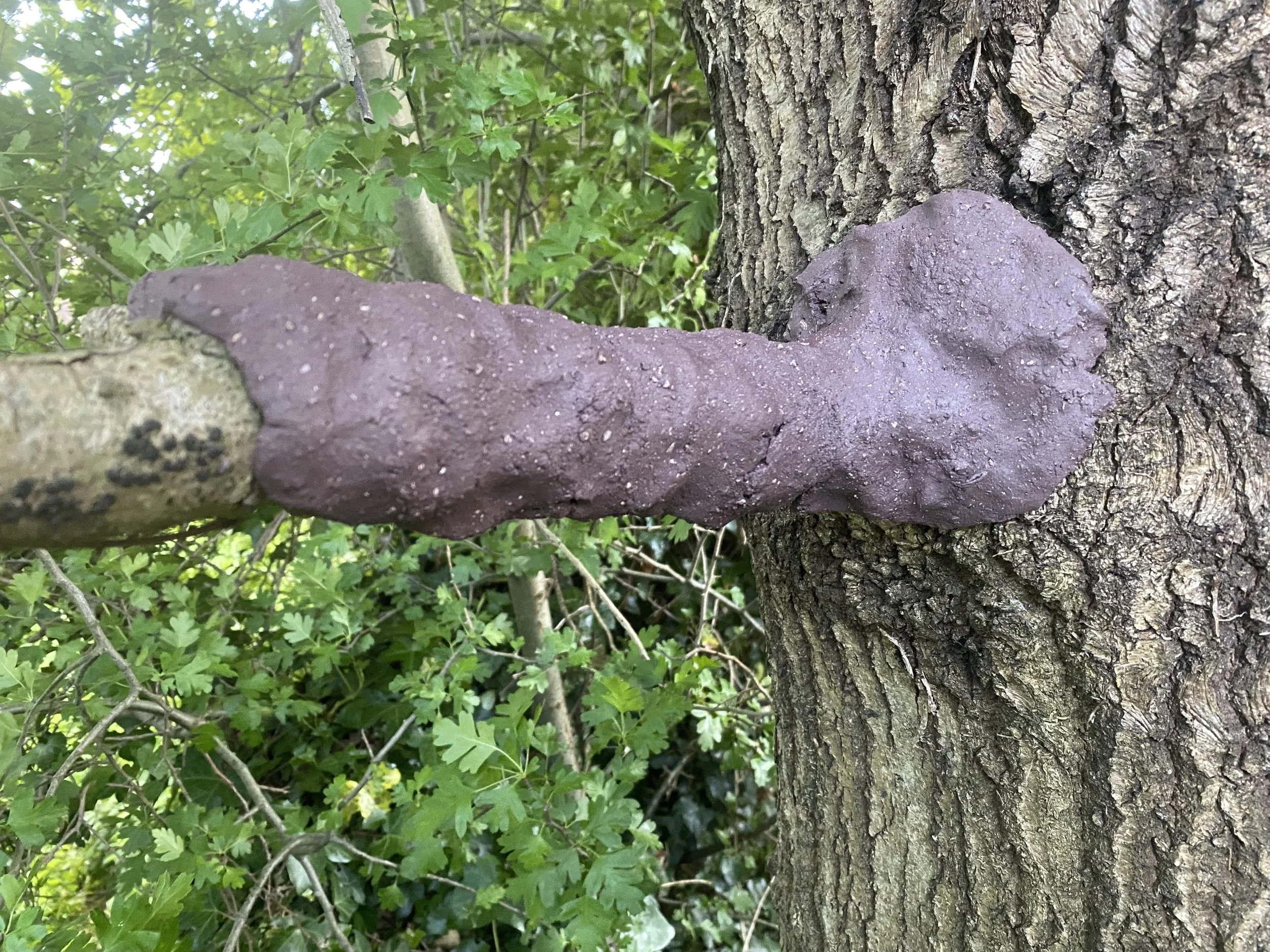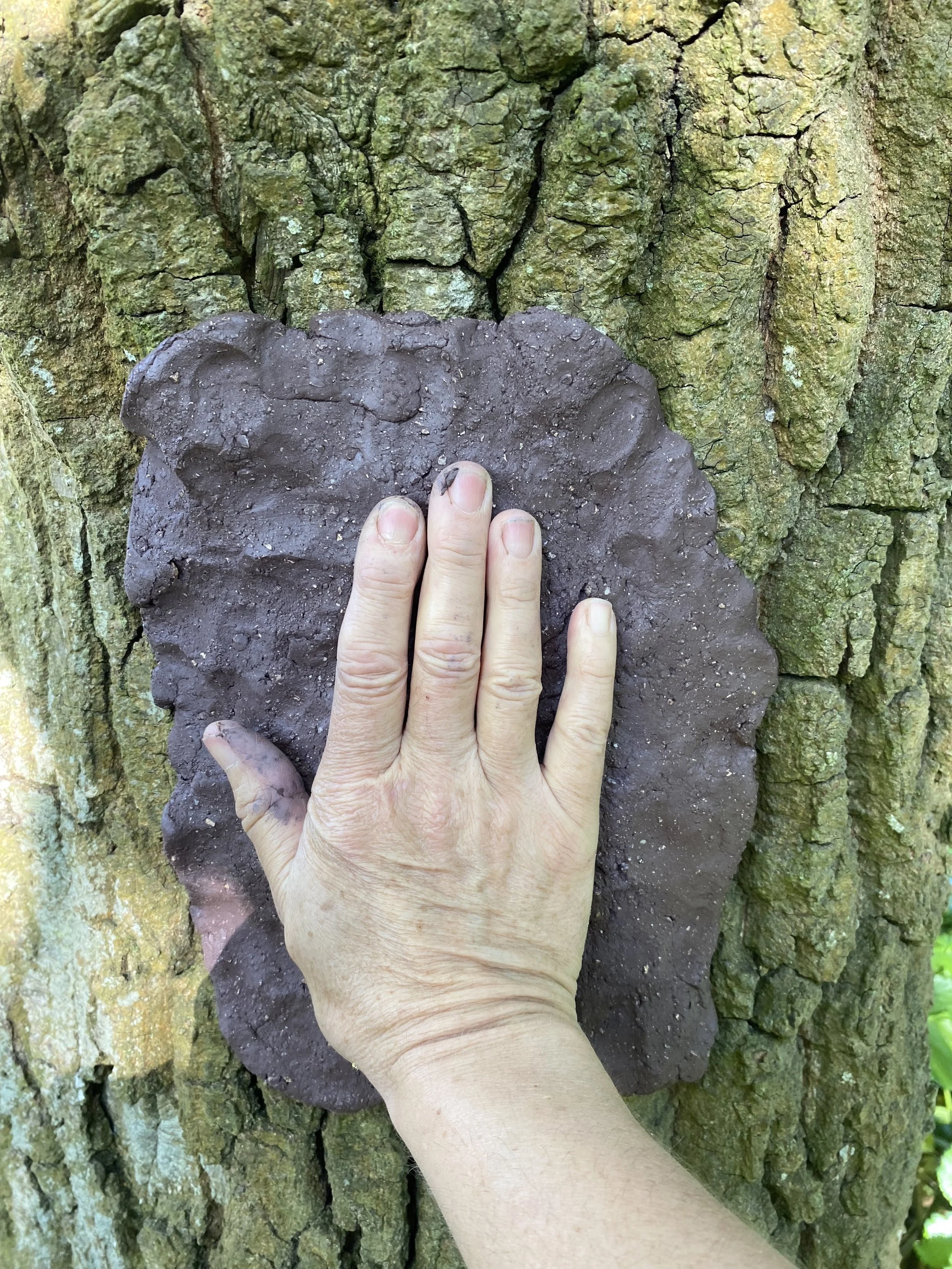Ac-Efer
Ac-Efer was specially commissioned for “Gathering the Commons” at St. Stephen’s Chapel, West Norwood Cemetery, May 2025. The work is inspired by the Great North Wood, a vast, ancient oak woodland which once included West Norwood, and the now culverted river Effra, which flows beneath West Norwood cemetery. Oak in Anglo-Saxon is “ac”, and “efer” is Anglo Saxon for riverbank, the possible origin of the name Effra.
From the Middle Ages onwards, oak from the Great North Wood was coppiced for timber and charcoal. As London expanded, the woodland was cleared, so that now only small fragments of the original wood remain. Similarly, the river Effra, a tributary of the Thames, and itself fed by springs from the Great North Wood, became increasingly suburbanised to the extent that in the Victorian period it was incorporated into the London sewerage system.
Ac-Efer honours this lost woodland and subterranean water. The fired clay pieces represent oak tree branches, arranged in the shape of the course of the river Effra and its tributaries. While each bough has a texture formed by pressing wet clay onto a living oak tree, the use of black, fractured clay is suggestive of wood that has been cut and burned. Equally, the pieces could be perceived as relics, unearthed from a time when the Great North Wood and river Effra flourished.
“Gathering the Commons”, St Stephen’s Chapel, West Norwood Cemetery, 31 May to 8 June 2025. Lucy Mayes, Catherine Morland, Marissa Stoffer and Sara Trillo. Curated by Bosse & Baum
Ac-Efer
Installation shot of Ac-Efer
Ac-Efer with work by Catherine Morland (left and far right), and Marissa Stoffer (right)
Ac-Efer with work by Lucy Mawes (left and centre) and Catherine Moreland (right)
Ac-Efer with work by Marissa Stoffer (right)
Ac-Efer detail
Ac-Efer detail
Ac-Efer detail
Ac-Efer detail
Ac-Efer detail
Ac-Efer detail
Ac-Efer detail
Ac-Efer detail
Clay impressions on oak tree
Clay on oak tree
Oak and clay
Oak branch impression
Pressing clay to oak bark
John Rocque map showing the Great North Wood, 1745
The Drainage Basin of the River Effra by Martin Knight
More Work:
